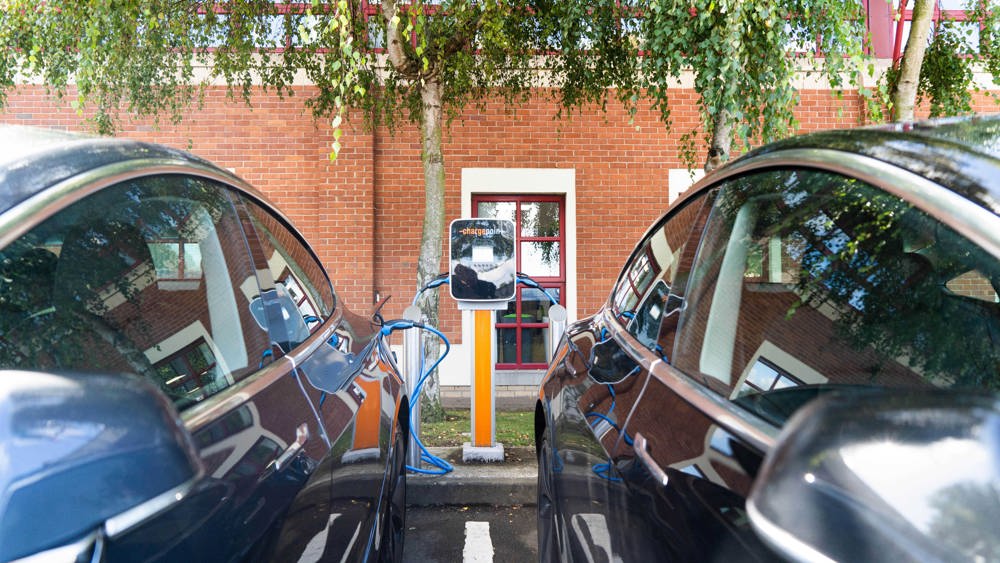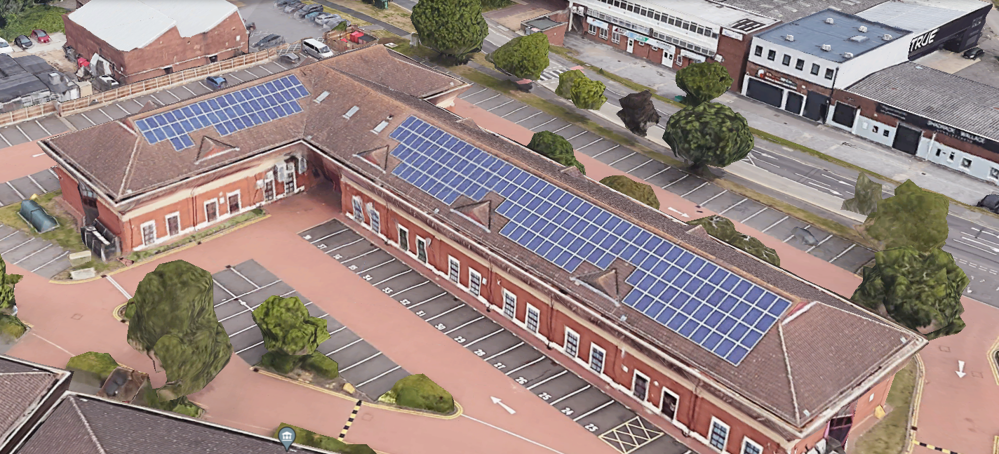Decarbonising Kingfisher House
Overview:
Led by GC Energy Solutions, Kingfisher House is a showcase of its capacity for creating and delivering energy solutions. The project has designed an energy solution and decarbonised the building at Kingfisher House.
The showcase project aimed to enable Ground Control to:
- Take control of the energy used within the building and understand its consumption, with the ambition of reducing scope 1 emissions and supporting Net Zero by 2038
- Improve the efficiency of the building by retrofitting and upgrading energy systems
- Install the latest green technologies to support renewable energy and remove the reliance on the grid
Design:
- Creation of a full proposal and design pack including electrical designs
- DNO (distribution network operator) application
- Topographical Surveys
Installation:
- Relevant and necessary applications for electric works including G99 application for safe PV installations
- Building and fleet installations including:
-
- LED Lighting Upgrades
- Photovoltaics (PV) Installation
- EV Chargers
-
Maintenance:
- Inspection and testing for new installations
- Ongoing periodic testing
The in-house project worked with GC Energy Solutions and a series of key tenants at Lake Meadows business park in Billericay, Essex.
Scope of Works:
Design and Consultancy
The energy proposal for Kingfisher House recommended upgrading and retrofitting existing systems, as well as the installation of new green technologies. An initial desktop study identified a mid-to-high level of energy usage through working hours 0900-1730. Using these parameters as guidance, the following recommendations emerged, focusing on the greatest decarbonisation impact for the smallest investment.
- PV | To support the energy demand during core hours, the proposal included the installation of 190 x 450w roof-mounted panels, generating 80kwp. This would offer a ROI in under 4 years from monthly savings on energy bills, as well as support the company's Scope 1 emission targets with the use of green energy.
- LED Luminaires | To reduce energy usage and increase efficiency when in use, LEDs were suggested to replace outdated and 'energy hungry' t4 Florescent tubes, along with the introduction of lighting control. The proposed lighting was highly efficient 600X600 LED grid-mounted luminaires throughout our building.
- Lighting Control | The ideal recommendation is that the above LEDs work in tandem with daylight detection to reduce unnecessary energy consumption and monition detectors for instances when lights are "left on". Daylight saving automatically dims the luminaires closest to the windows when external conditions allow.
- EV Chargers | Initial findings noted a long dwell time at the office of over 5 hours and a requirement for a large number of chargers due to a growing EV fleet. The solution suggested, which had to work with the available engery capacity, was to load balance across multiple chargers.
- Motor Upgrades | Based on the technical survey from our sister company Future Motors, replacing existing belts, motor pulleys, and taper locks on our air handling units with highly efficient motors, could reduce energy usage by 30%. These works are expected to generate energy savings with an expected saving of over £1,500 per year, and a ROI in just over 2 years.
Transitioning our Fleet
To directly support the decarbonisation goals of Ground Control, and a move towards Net Zero by 2038, the installation of EV chargers enabled a growing fleet of EVs that in turn reduces scope 1 emissions. The changes to support a transitioning fleeting include:
- Electric Vehicle Chargers | Installation of 10 mixed-use 22kW fast charging ports, servicing business park employees during working hours and the general public outside of these. The installation has been future-proofed considerations made for the additional charger, with a further 19 7kW & 1o 22kW ports planned in 2024 to bring the total capacity to just over 700kW.

Decarbonising our Building
Changes and retrofitting at Kingfisher House created immediate energy savings on energy bills, whilst protecting the value of the property by improving the EPC. Changes identified in the proposal that were implemented include:
- LED Lighting Upgrade | Swapping out inefficient fluorescent luminaire lighting for highly efficient long-life LEDs. The lighting upgrades installed 600x600 grid-mounted luminaires which also incorporated motion sensors and daylight-dimming technology to reduce wasted energy.
- Photovoltaics (PV) Installation | Taking advantage of the roofing space available on-site at Kingfisher House, just under 200 panels were installed to create a 45Kw energy system. The installation provides a source of renewable and off-grid energy for the office.

Maintain Your Energy Assets
Ongoing on an annual basis, GCES maintains all the installed products at Kingfisher House. This includes regular inspecting and testing of new and retrofitted technology on a planned and preventative maintenance plan.
As a showcase of the installation capabilities of GCES, Kingfisher House is an ongoing and live case study. The works so far have inspired conversations to see how this can be applied across Lake Meadows Business Park.
GC Energy Solutions

Decarbonising a motorway services chain





